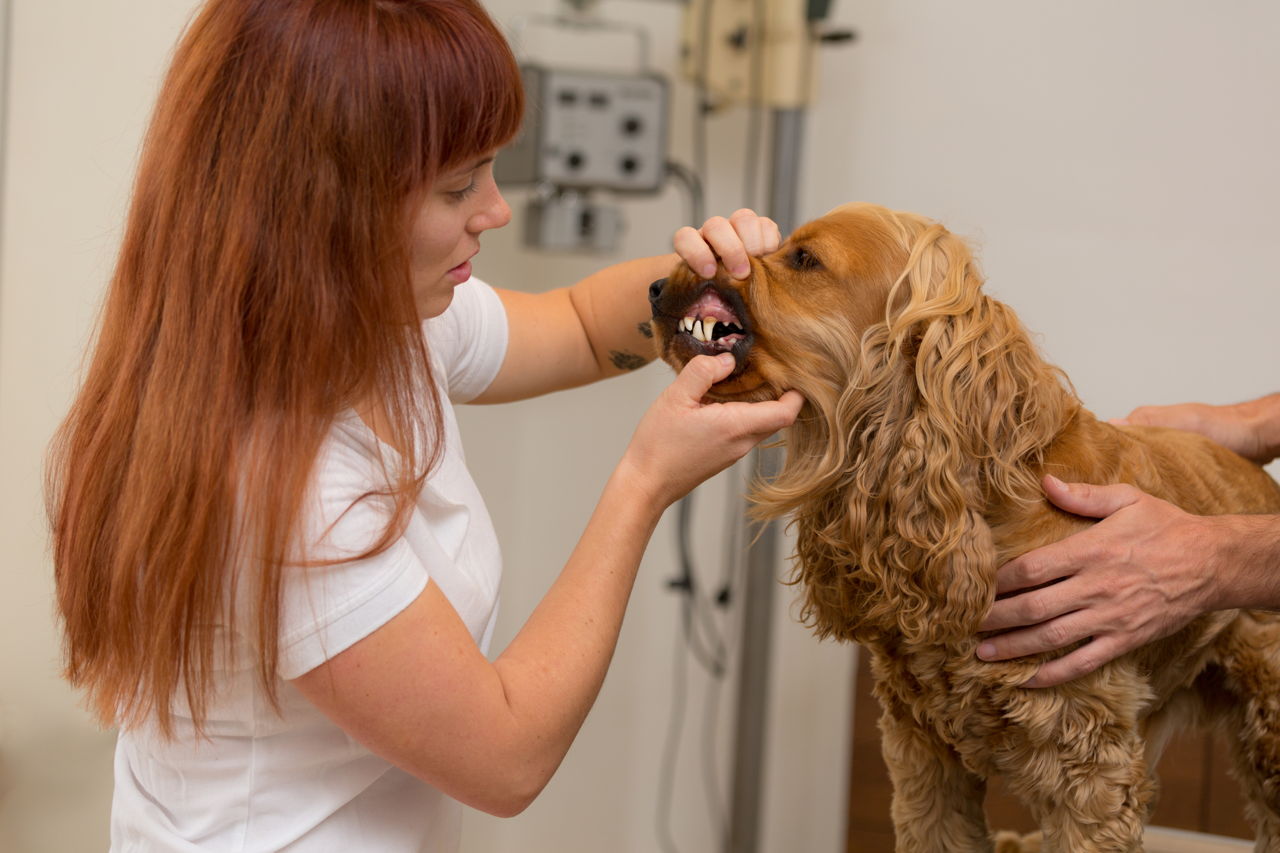
Antibiotics are used to treat various kinds of diseases that are caused by bacteria. To find out about the commonly prescribed antibiotics for canines, keep reading.
Bacterial infections and diseases are quite common in canines. When it comes to conditions where the causal organism is a bacterium, the treatment typically involves the use of antibiotics that are either bactericidal or bacteriostatic in nature. While the active compounds present in bactericidal drugs have the ability to kill bacteria, bacteriostatic drugs contain agents that inhibit the growth of bacteria by preventing them from multiplying. Antibiotics for dogs are available in the form of chewable tablets, capsules, liquids, and ointments. It is essential to consult a veterinarian before giving an antibiotic to your dog. Here’s a list of the most common antibiotics for canines and the conditions that they are used to treat.
Antibiotics for Dogs
Warning
Dogs could develop an allergic reaction to certain antibiotics. Dog owners must be very cautious while giving antibiotics to their pets. It is essential to know about adverse drug interactions. An overdose could be harmful for the dog in ways more than one, so care should be taken while administering these medicines at home. Do check the expiration date on the drugs.
Amoxicillin (Amoxi-Tabs, Biomox, Robamox-V, Amoxi-Drop, Amoxi-Inject)
This is a general all-purpose antibiotic that works well in fighting against infections by various kinds of bacteria. It is one of the most commonly prescribed drug when it comes to treating bacterial infections.
What is it Used For
➩ Tooth infections
➩ Upper respiratory tract infections
➩ Bladder infections
Side Effects
➩ Nausea
➩ Vomiting
Amoxicillin-clavulanic acid (Clavamox, Augmentin)
This antibiotic is a combination of amoxicillin and clavulanic acid. While amoxicillin prevents bacteria from growing, clavulanic acid inhibits the activity of certain types of bacteria that produce beta-lactamases. It is available in the form of liquid (suspension), tablets and chewable tablets. It specifically addresses infections caused by Staphylococcus bacteria.
What is it Used For
➩ Infected bite wounds
➩ Skin infections
➩ Periodontitis
➩ Kennel Cough
➩ Klebsiella infections
Side Effects
➩ Nausea
➩ Vomiting
➩ Diarrhea
Cefpodoxime Proxetil (Simplicef, Vantin)
This drug is a cephalosporin antibiotic. It is effective against infections caused by gram-positive and gram-negative bacteria.
What is it Used For
➩ Ear infections
➩ Bladder infections
➩ Abscesses
➩ Skin infections
Side Effects
➩ Vomiting
➩ Diarrhea
➩ Stomach upset
Chloramphenicol (Chloromycetin, CHPC)
This is a broad-spectrum antibiotic. It can therefore act against different types of bacteria. It is effective when it comes to treating infections that are caused by gram-positive and gram-negative bacteria.
What is it Used For
➩ Pneumonia
➩ Problems associated with prostate gland
➩ Eye infections
➩ Hypertrophic osteodystrophy in large breed dogs
Side Effects
➩ Nausea
➩ Diarrhea
➩ Loss of Appetite
➩ Blood dyscrasia (rare)
Doxycycline (Vibramycin)
This oral antibiotic is available in the form of tablets, capsules, syrup, coated capsule, and liquid (suspension).
What is it Used For
➩ Lyme disease
➩ Upper respiratory tract disorders
➩ Infection caused due to tick infestation
➩ Urinary tract infections
Side Effects
➩ Staining of teeth
➩ Nausea
➩ Vomiting
➩ Loss of Appetite
➩ Scarring of esophagus
➩ Diarrhea (rare)
➩ Changes in blood cells (rare)
➩ Liver damage (rare)
➩ Photosensitivity (rare)
Erythromycin (Ery-tab, EryPed, Eryc)
This is a macrolide antibiotic that inhibits bacterial protein biosynthesis. It is believed to be a good alternative for penicillin and is prescribed for those who are allergic to penicillin.
What is it Used For
➩ Digestive ailments
➩ Intestinal infections
➩ Infections caused by Campylobacter bacteria
Side Effects
➩ Vomiting
➩ Nausea
➩ Diarrhea
➩ Loss of Appetite
Orbifloxacin (Orbax)
This is a broad-spectrum bactericidal drug that is placed under the category of fluoroquinolone antibiotics. It destroys bacteria by curbing the synthesis of bacterial DNA.
What is it Used For
➩ Infections caused by Pseudomonas
➩ Skin infections
➩ Urinary tract infections
➩ Soft tissue infections
Side Effects
➩ Vomiting
➩ Behavioral changes
➩ Diarrhea
➩ Loss of Appetite
Sulfasalazine (Azulfidine)
This is a sulfonamide drug that is not only effective as an antibacterial drug, but is also anti-inflammatory in nature. It is available in the form of delayed-release and enteric-coated tablets.
What is it Used For
➩ Inflammatory bowel disease
➩ Crohn’s disease
➩ Ulcerative colitis
Side Effects
➩ Dry eyes due to long-term use
➩ Vomiting
➩ Loss of Appetite
➩ Jaundice, fever, rash and blood dyscrasia (rare side effects seen in dogs being treated for colitis)
Metronidazole (Flagyl)
This antibiotic is used specifically to treat anaerobic bacterial infections. It is also used for treating protozoal infections. It disrupts the DNA of bacteria, thereby killing them.
What is it Used For
➩ Colitis
➩ Diarrhea
➩ Intestinal infections
Side Effects
➩ Excessive drooling
➩ Gagging
➩ Sudden liver failure (rare)
➩ Diarrhea (rare)
➩ Low energy levels (rare)
➩ Dark urine (rare)
➩ Blood in stool (rare)
Trimethoprim Sulfa (Bactrim, Tribrissen, Septra, Sulfatrim, Cotrim)
This is a sulfa drug that is prescribed for treating bacterial infections. This combination of trimethoprim and sulfa curbs the growth of bacteria. The sulfonamides curb the synthesis of folic acid, and trimethoprim inhibits the synthesis of para-amino benzoic acid. This sequential blockade curbs the process of DNA replication, thereby killing bacteria.
What is it Used For
➩ Kennel cough
➩ Prostate infections
➩ Infections caused by Staphylococcus and Pseudomonas Aeruginosa
Side Effects
➩ Sulfa crystals in urine
➩ Dry eyes due to long-term use
➩ Anemia (rare)
Tetracycline (Panmycin, Tetracap, Tetracyn, Sumycin, Tetralan)
This is a broad-spectrum antibiotic. It works by inhibiting the synthesis of proteins that are necessary for the growth of bacteria.
What is it Used For
➩ Prostate infections
➩ Eye infections
➩ Lyme disease
➩ Urinary tract infections
➩ Leptospirosis
➩ Toxoplasmosis
Side Effects
➩ Nausea
➩ Vomiting
➩ Diarrhea
➩ Loss of appetite
➩ Formation of urinary stones (rare)
➩ Staining of teeth in puppies
It is essential to inform the veterinarian about the drugs that your dog may be allergic to. If you are giving any other drug to your pet, make sure that you inform the veterinarian about it. This will lower the risk of adverse drug interactions. Comply with the guidelines regarding dosage and the duration for which the drug is prescribed. You can also include some probiotics in your pet’s diet to maintain the levels of friendly bacteria. This is essential for your dog’s health and betterment.
Disclaimer: The information provided in this article is solely for educating the reader. It is not intended to be a substitute for the advice of a veterinarian.


